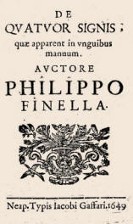The Liber Chronicarum Translation Series will only be sold as a
complete 4 volume set.
|
 |
Liber Chronicarum Reference Edition Facsimile
Nuremberg Chronicle Reference Edition Facsimile
|
|
|
The complete
facsimile of the Liber Chronicarum 1493 Latin edition. Hartmann Schedel's complete illustrated history of the world. The Chronicle was first published in Latin on 12 July 1493
in the city of Nuremberg, Germany. This Volume is designed to be an optional
companion volume to the Liber Chronicarum Translation Series.
Format is 16.25" x 11.25". Hard cover cloth.
[20] CCXCIX, MAP , 11pp
Published by Selim S. Nahas Press, Boston, MA
650 printed pages.
|
|
|
ALA CHOICE REVIEW RECOMMENDS LIBER CHRONICARUM TRANSLATION SERIES
Look
for the review of the Liber Chronicarum Translation Series in
ALA CHOICE REVIEWS FOR ACADEMIC LIBRARIES
February 2012 Vol. 49 No. 06
 |
Liber Chronicarum Translation Volume 1
Nuremberg Chronicle Translation Volume 1
Hartmann Schedel
|
|
|
This is the
first volume of the Liber Chronicarum Tanslation series.
The content
includes the 1st, 2nd, 3rd and 7th Ages of the World.
-
The
First Age of the World from Creation to the Deluge
-
The
Second Age from the Deluge to the Birth of Abraham
-
The
Third Age from the Birth of Abraham to the Kingdom of David
-
The
Seventh Age, reporting the coming of the Antichrist at the end of the world and
predicting the Last Judgment.
The first volume was produced to have the beginning and
end of the world. This volume contains over 1300
notes.
Format is
16.25" x 11.25". Handbound hard cover
cloth.
265 printed pages.
|
|
|
 |
Liber Chronicarum Translation Volume 2
Nuremberg Chronicle Translation Volume 2
Hartmann Schedel
|
|
|
This is the
second volume of the Liber Chronicarum Translation
series.
This volume
contains the translation of the 4th and 5th Ages of the
World.
This volume contains over 1300 notes
identifying sources used by Schedel and clarifying
elements of the translation. Primary and secondary
sources are listed at the end along with the addition of
an index of
illustrations, people and places.
Format is
16.25" x 11.25". Handbound hard cover
cloth.
250 printed pages.
|
|
|


These
are not actual photos of the volumes and do not reflect actual color. |
Liber Chronicarum Translation Volumes
3&4
Nuremberg Chronicle Translation Volumes
3&4
Hartmann Schedel
|
|
|
These are the
Third and Fourth volumes of the Liber Chronicarum Translation
series.
These volumes
contain the translation of the 6th Age of the
World.
- The Sixth Age from
the Birth of Christ to the Present Day.
Volume 3 contains 3,231 notes
and Volume
4 contains 3,746 notes
identifying sources used by Schedel and clarifying
elements of the translation. Primary and secondary
sources are listed at the end along with the addition of
an index of
illustrations, people and places.
Format is
16.25" x 11.25". Handbound hard cover cloth.
Volume 3 is 475 printed pages.
Volume 4 is 563 printed pages.
|
|
|
 |
Philippo Finella, De Quatuor Signis |
|
|
This
is a facsimile and translation of a very obscure work by Philippo
Finella published in 1649. Though he spent much of his life in Italy and is
remembered chiefly for his writings on Metoposcopy and
Physiognomy, Philippo Finella also wrote a short
chiromancy in his Latin physiognomical work 'De
Planetaria Naturali Phisionomia' published at Naples in
1649. The chapter on the hand covers some sixteen pages
and includes a discussion of astrological rulerships of
the mounts and fingers as well as discussing various
line formations such as the triangle and the quadrangle.
Finella also wrote a short treatise on divination from
the different markings that can be found on the nails in
his 'De Quartor Signis apparet in unguibus Manuum'. |
Translation complete: Available
April
2014 |
 |
Gerolamo Cardano: Metoposcopia
|
ISBN: Translation complete |
This
is a Facsimile and Translation of Gerolamo Cardano's Metoposcopia. Metoposcopy is the interpretation of facial wrinkles,
especially those on the forehead, to determine the character of a person. It is
also used as a type of divination and has been used in conjunction with astrology.
This pseudoscience was invented by the great 16th century mathematician,
physician, and astrologer Girolamo Cardano (1501-1576). Legend has it
that Cardano starved himself to death at the age of seventy-five rather than
live and run the risk of falsifying his horoscope and thereby discredit his
beloved astrology.
The drawing reproduced here is from Cardano's Metoposcopia
and shows the position of the planets on the wrinkles of the forehead.
Cardano's science of forehead reading did not catch on, unlike the typhus fever
of which he gave the first clinical description.
In all, Cardano worked up about 800 facial figures, each
associated with astrological signs and qualities of temperament and character.
He declared that one could tell by the lines on her face which woman is an
adulteress and which has a hatred of any lewdness. Long, straight furrows
indicate nobility of character. He claimed to be able to tell the generous from
the trickster by their distinct lines and noted that having three curved
furrows on the forehead proves one is a dissolute simpleton. The strongest
feature of metoposcopy is that it is a non-invasive method of quickly assessing
character. Its weakest features are that it has no scientific merit, although
it can be easily verified by confirmation bias, and it is very cumbersome to
have over 800 character traits to consider.
|
Translation
complete: Available April 2014 |
 |
Fasciculus Medicinae 1495
ISBN: Translation complete |
|
|
One of the most famous medical works of the 15th century, the Fasciculus
Medicinae delves into a number of topics including uroscopy, phlebotomy,
medical astrology, gynecology, surgery, internal medicine, pestilence and
anatomical demonstration. This translation and facsimile is of the entire
six books that comprise the Fasciculus medicinae. This is a partial translation of both works.
|
Translation
complete: Available April 2014 |
|

